Color. Material. Finish. CMF. Three small letters with a huge, outsize impact on product design and success. CMF increasingly is becoming key to connecting with customers and users.
London-based designer and author Chris Lefteri wrote recently: “CMF is no longer just about aesthetics; it’s about storytelling, sustainability, and shaping human experiences.”
He and his team have just published a forward-looking, three-part collection in the form of a CMF Design Guide that explores circular design, reusable materials, the growing acceptance of imperfection in design, and the intersection of CMF and user experience (UX).
Lefteri, who has written multiple books on materials and design, has also worked closely with German materials giant Covestro, another company intensely interested in this topic. Covestro notes that “integrating CMF design with the unique demands of various industries is more crucial than ever in order to create a competitive advantage.”
From a designer’s aesthetic point of view, the product’s color, material and finish should always be considered and chosen in combination, said CMF expert Emily Shi, who oversees the firm’s global business development for color and aesthetics.

To that end, its CMF team has developed three industry-specific aesthetic toolkits, responding to trends in 2025 and beyond. Its research focuses on three major industries –– electrical and electronics (E&E); automotive/mobility; and healthcare. Each year it assesses the coming trends in this space, especially as they relate to Covestro’s primary resins of polycarbonate (PC) and PC/ABS blends, though the concepts typically can be applied more broadly to other resin types.
Each sector has its own traits. E&E product trends, for example, tend to change every few months, while mobility (think automakers) have a much longer development timeline of two to five years. And healthcare has key regulatory color-matching rules, based on the product’s potential end use.
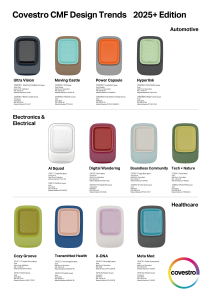
That said, there increasingly is cross-over between the sectors, particularly as E&E continues to penetrate more deeply into both medical and automotive products. The ever-expanding field of smart devices with healthcare functions begin as consumer electronic applications, but then may move closer to healthcare applications, depending on their functionality. However, they tend to retain the CMF of electronics. And, increasingly, products developed for the micro-mobility sector tend to be very much focused on E&E technology (and CMF trends).
Covestro held workshops and developed these findings in part by working closely with 25 professors and students at Shanghai Tech University’s design school over a period of three months. “We’re looking forward to working with more students globally,” Shi said, and to continue to listen to the voice of the customer.
Their goal with this project? To inspire designers and make sure they understand how much of an effect CMF can have on the end product.
Here are some of their key insights, as spelled out in a late-December phone interview from Shanghai with Shi. Here’s a quick review, by sector.
Electrical & Electronics
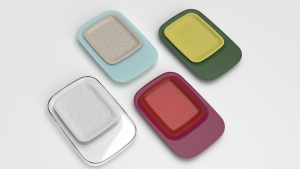
As clearly on display at the recent CES 2025 consumer technology show in Las Vegas, artificial intelligence (AI) is the dominant trend in E&E. Brands and manufacturers are integrating AI into virtually any product you can think of.
AI Squad: Shi notes that pure white is a staple of electronic product design for the way it bridges the gap between the emerging technology and the physical products. “A transparent texture adds to the lightness sought by smart devices, and the colors shine under the high-gloss finish, integrating complex technology into users’ lives in a way that is intuitive and welcoming.”

Digital Nomads: A key trend in E&E is what Covestro describes as Digital Wandering, reflecting the growing move toward hybrid offices –– at home, in the office and anywhere in between. For these digital nomads, passion and inspiration are vital. “High chroma transparent colors massage the senses,” Covestro states in its E&E trend report. “Progressions of pink and red convey vitality and a positive attitude.”
Co-Living: The company describes a second trend as Boundless Community, reflecting the rise in co-living, especially for those in expensive big cities. In such arrangements, residents typically have their own private rooms but share facilities such as kitchens and bathrooms.
Under one roof we live together but seek to retain our independence, Shi noted. “Diverse public spaces provide residents with opportunities to interact, inspire one another, and attain a higher quality of life with like-minded individuals.”
From the CMF perspective, Covestro states, “A warm gray is inclusive and welcoming. A misty blue alleviates anxiety, providing a necessary isolation for individuals striving to maintain a delicate balance between their own private world and the world at large.”
Tech x Nature: A final component of E&E relates to the pursuit of sustainable living, and the desire to conserve and protect natural resources and live in an eco-friendly manner. “Home is no longer relegated to serving as mere shelters,” Covestro notes, “but also offer broader protection for nature.”
ULTRUS software facilitates deeper, broader connections between the products organizations create, the people in their workforce and their impact on the planet. Learn more here!
This, the firm’s research shows, is best reflected in yellow hues and forest-like green shades. This works well not only in homes but also in outdoor applications such as electric vehicle base and charging stations.
Mobility
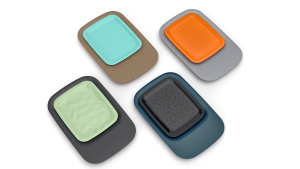
As digital technology makes increasing headway into smart mobility, autonomous driving
technology and intelligent in-car assistants gradually become more widespread. Technological development has always prioritized safety. “When control is relinquished over the steering wheel and pedals,” the company notes, “high-level automation shifts responsibility from the user to the system. The technological question now is how to navigate moral dilemmas where a choice must be made between the two and how to build trust in these vehicles.”
Ultra Vision: Shi wrote in the report that a pearlescent effect conveys an “external expression of the intelligent system within, marrying wisdom and versatility in blue, while the translucence of the black is modest and restrained, establishing a bridge of trust between users and the machine.”
Moving Castle: With the rise of remote work, more people are choosing to live as digital nomads who find “living in car” offering something a fixed, detached home cannot. Interior space is taking on the attributes of a real home, liberating our traditional understanding of what makes a home. Increasingly popular recreational vehicles (RVs) have grown from just another vehicle to embody an artistic lifestyle. Increasingly, Covestro notes, these tiny mobile homes provide a space for expressing individual personality coupled with the immense freedom of mobility.v
The firm found the vehicle cockpit to be an extension of the larger environment and a personal space of emotional release. From a CMF perspective, it points to a muted gravel color with mottled marble to resemble “a solid wall providing a strong sense of protection, yet it feels
like being out in the wild, surrounded by nature’s rugged beauty.” A bright mint green, meanwhile, lightens the overall ambiance with a fresh hue, adding a touch of lightness.
Power Capsule: Energy storage is a fast-growing sector and EV charging also is becoming ever more important. “The
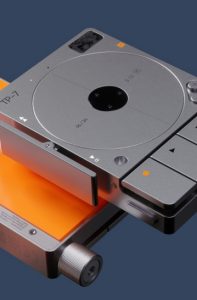
energy battery revolution,” notes Covestro, “is driving a shift toward environmentally friendly modes of travel with greater economy and will prove a crucial step in the long-term replacement of vehicles running on traditional fossil fuels.”
For this, bright orange makes good color sense, combined with metallic silver. Orange is fresh and ultra visible while the silver “exudes speed and combines functionality with the lightweight aesthetic of cutting-edge technology.” This CMF combination is ideal for network devices as well as for consumer electronic products such as wearables, Internet of Things (IoT) devices, smart appliances, and other types of mobile devices.
Hyperlink: The rise in multi-modal transportation keyed this research. “Gone are the days of limited single-mode public transport,” says Covestro. “People may now drive or take the subway and then hop on an electric scooter, hoverboard, or electric wheelchair to reach their destinations. Micro-mobility enhances travel efficiency and is more convenient, flexible, and environmentally friendly.”
For these applications, Shi sees edge-lit bright lime as a futuristic, eye-catching hue, while black contrasts add stability and modernity to the overall aesthetic.
Healthcare
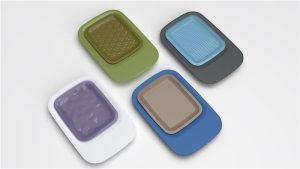
Today, individuals are weary in body and mind and in need of a remedy – technology – capable of providing spiritual nourishment and physical well-being. Access to public health facilities and telemedicine provide new opportunities for expanding healthcare scenarios and allocating medical resources, the firm suggests. Consequently, the demand for convenient healthcare products that can be used in daily life has surged.
Cozy Groove: Members of Generation Z, suggests Covestro, tend to follow their inner preferences and freely express their personal style in life, whether it’s adding their own touch to home décor through handmade projects, or finding relaxation and comfort amidst hand-planted greenery. Their focus on the personal life exceeds that of previous generations, as does their pursuit of value for money.
For this the firm says the bright chartreuse color is soft and fresh like tender shoots. These applications also offer a good opportunity for Covestro’s portfolio of more sustainable options, such as its RE materials. These attributed with a proportion of recycled raw materials derived from bio-circular feedstock, reducing environmental impact and improving social responsibility with ISCC+ certification.
Transmitted Health: Medical treatment is taking on a broader meaning, and expanding from formal healthcare settings to inside one’s own home, via such things as wearables and portable drug-delivery devices. Connected devices are essential to this process, by allowing patients to access, share, and analyze medical data and doctors to monitor the health of their patients and plan treatment remotely.
This only increases the need for medical devices to be safe and reliable while keeping patient data secure. Devices must be easy to use and identify, and medical assistance must be readily accessible to patients when needed.
From a CMF perspective, Shi suggests that “The purity of blue draws attention to the professional, safe, reliable nature of the product, while the vibrancy of orange adds a sense of vitality.”
X-DNA: Humans continue to strive to extend life and combat aging. Recent studies estimate the global anti-aging market will grow by 6.5% annually between 2023 and 2028, and reaching a value of $98.6 billion as people seek more rational, professional, and targeted technology-driven anti-aging solutions against the passage of time.
Covestro’s research indicates that translucid purple embodies mystery and the spirit of exploration driving humanity to overcome its own limitations. They suggest pairing it with a cool white reminiscent of moonlight.
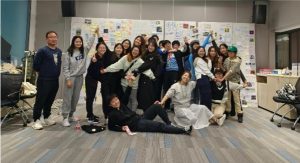
Meta Med: Finally, AI also is impacting the healthcare sector, as well. The technology is being leveraged to help detect early symptoms and reduce treatment times, saving institutions money and improving the efficiency of medical professionals. From computer vision technology to upgraded cloud computing power, so-called “meta medicine” is more precise than a human doctor in early disease detection and diagnosis.
The company suggests using a cold matte gray to reflect the reliability of the product and set off a transparent blue representing embedded chips. The gray of the back panel is said to convey trust while contrasting aesthetically with the blue, which represents Intelligence.
In summary, Shi noted, this research is meant to underscore how CMF can serve as a powerful tool to forge emotional connections and enhance overall experiences.
“By aligning our design concepts with market trends, we ensure our material solutions effectively address the industrial demands of these sectors,” she added. “This integration is vital for shaping the future of product design at the intersection of technology and consumer experience.”
Find more from Covestro on Prospector.
.
The views, opinions and technical analyses presented here are those of the author or advertiser, and are not necessarily those of ULProspector.com or UL Solutions. The appearance of this content in the UL Prospector Knowledge Center does not constitute an endorsement by UL Solutions or its affiliates.
All content is subject to copyright and may not be reproduced without prior authorization from UL Solutions or the content author.
The content has been made available for informational and educational purposes only. While the editors of this site may verify the accuracy of its content from time to time, we assume no responsibility for errors made by the author, editorial staff or any other contributor.
UL Solutions does not make any representations or warranties with respect to the accuracy, applicability, fitness or completeness of the content. UL Solutions does not warrant the performance, effectiveness or applicability of sites listed or linked to in any content.
